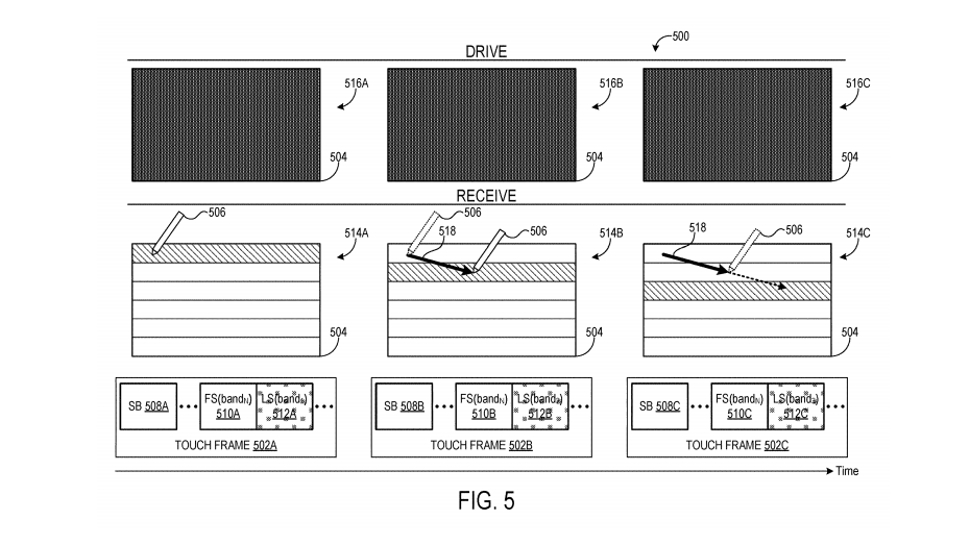Microsoft has a bright idea to make the Surface Pen more accurate
Poetry in motion vectors…

Surface Pen users will doubtless be pleased to hear that Microsoft could be considering a new method for making its stylus more accurate.
At least going by a patent that has just been published (spotted by Windows Latest) for an ‘active stylus motion vector’. An active what now?
Basically, this patent is focused on the interaction between touchscreen and stylus, and more specifically, when a touch sensor is trying to locate the stylus by scanning its sensing area to detect the proximity of the pen.
- Microsoft is mulling haptic feedback for Surface Pen
- Could Surface Pen replace your mouse?
- We also ask: Is Surface Pro 6 a worthy upgrade?
Microsoft notes that in this case, engineers have to deal with a trade-off in terms of the accuracy of stylus location and the touch scanning frequency. The patent observes: “A touch sensor may increase stylus location accuracy by spending more time in a touch frame on sensing stylus location. However, increased scanning durations can reduce update frequency and introduce latency in interactions between the stylus and the touch sensor.”
In other words, there’s a danger of introducing lag when it comes to writing or drawing on the touchscreen – but reducing scan duration for smoother operation diminishes the accuracy of stylus location pinpointing.
Microsoft’s solution to the conundrum of how to better locate an active stylus over a capacitive touchscreen involves determining a motion vector for the pen in relation to the touch sensor.
This way, with the direction of motion determined, the touch sensor can limit its listening operations to the area where the stylus is predicted to move – thus keeping down scanning activity, while still achieving greater accuracy in terms of locating the pen.
Sign up for breaking news, reviews, opinion, top tech deals, and more.
In Microsoft’s words: “Relative to an instant measurement of stylus location, the motion vector may enhance stylus locating accuracy and listening operations by accounting for stylus motion not captured by the instant measurement.”

Better scribbling through prediction
You don’t really need to know all the ins-and-outs, mind: the central point here is that Microsoft is potentially working on giving stylus and touchscreen interaction a greater level of accuracy and maintaining smoothness, so the upshot could be the Surface Pen will simply work better.
The operative phrase being ‘could be’, because as ever, this may simply be something Microsoft’s researchers are looking into that never actually makes it to any real-world hardware.
Interestingly, one of the inventors of this particular technology mentioned in the patent document is Jonathan Westhues, Principal Research Manager at Microsoft, who headed up the group responsible for the capacitive touch and stylus controller in the Surface Hub.
In his Microsoft profile page, Westhues states: “I’m interested in capacitive user interfaces, and the novel application of concepts from digital signal processing and communications to improve performance in such systems.
“My current work relates to interfaces with similar underlying physics that go beyond finger touch and stylus, and to displays and user input more generally.”
- These are the best 2-in-1 laptops of 2019
Darren is a freelancer writing news and features for TechRadar (and occasionally T3) across a broad range of computing topics including CPUs, GPUs, various other hardware, VPNs, antivirus and more. He has written about tech for the best part of three decades, and writes books in his spare time (his debut novel - 'I Know What You Did Last Supper' - was published by Hachette UK in 2013).